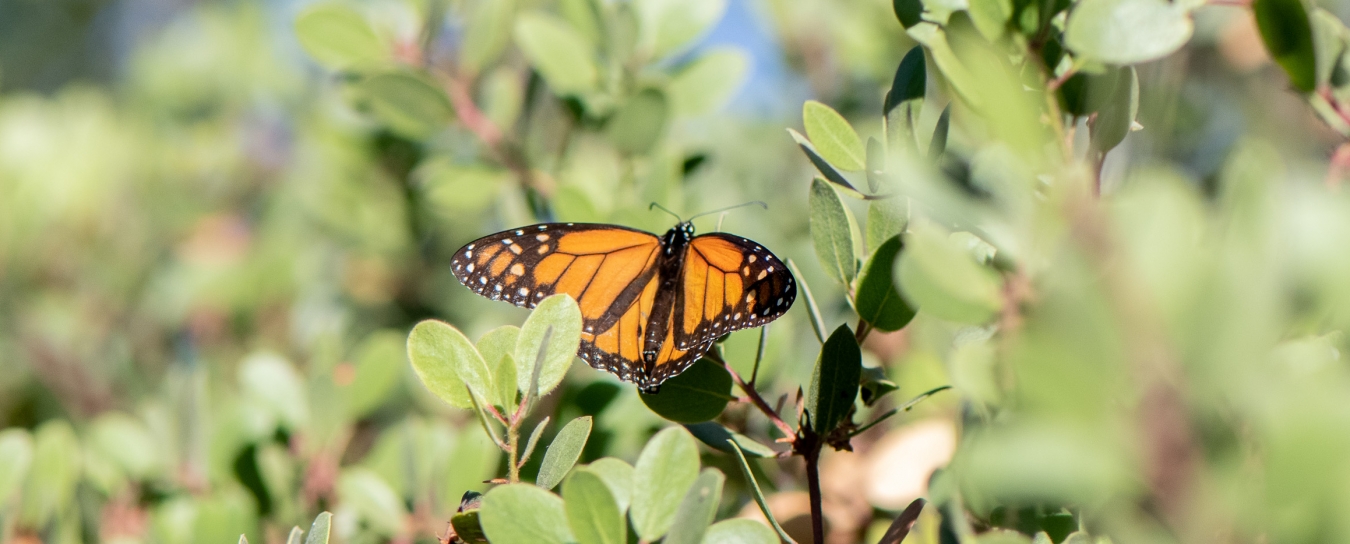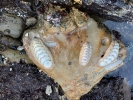
Invertebrates
See our handy guide to critters found in local homes and our Central Coast Butterfly FAQ. Browse the insects and other terrestrial arthropods we’ve identified. Check out local marine invertebrates, particularly bivalve mollusks and intertidal organisms.
- Anthropology
- Rocks & Fossils
- Invertebrates
- Vertebrates
- Botany
- Astronomy
- Fungi
- General
- Recently Asked
What Species of Chiton is this?
Hello,
We found these chitons students Shell Beach in Pismo Beach. It was low tide and we were exploring the tide pools.
They were on the underside of the rock.
While examining them they started to migrate to the bottom of the rock (we got video of their movement).
We haven't seen white chitons before or chitons that we're actively moving.
Can you tell us the scientific and common name for this species of chiton?

Curator Response
Hi Maria,
This appears to be a photo of Stenoplax conspicua, or the Conspicuous Chiton. It’s neat that you observed them moving. Like many other mollusks, they move with their muscular foot. Their articulated plates allow them to bend so they can shape themselves to cling to a curved or bumpy surface. It's really interesting to observe mollusks you might typically see stationary when they are on the move. Giant Owl Limpets, for example, are territorial and will drive other limpets out of their territory at a "ramming speed" that is notably faster than their grazing speed. Check out the beginning of this video from a research group at Chapman University. You will want to have the sound on to hear the voices of excited scientists cheering on a limpet. Moving at speed tires these animals out, and the researchers are looking into how that can make them vulnerable to being knocked off the surface to which they cling.
Stay curious,
Curator and Howard/Berry Chair of Malacology Henry W. Chaney, Ph.D., and Invertebrate Zoology Collections Manager Vanessa Delnavaz, M.A.


